How Human Senses Work
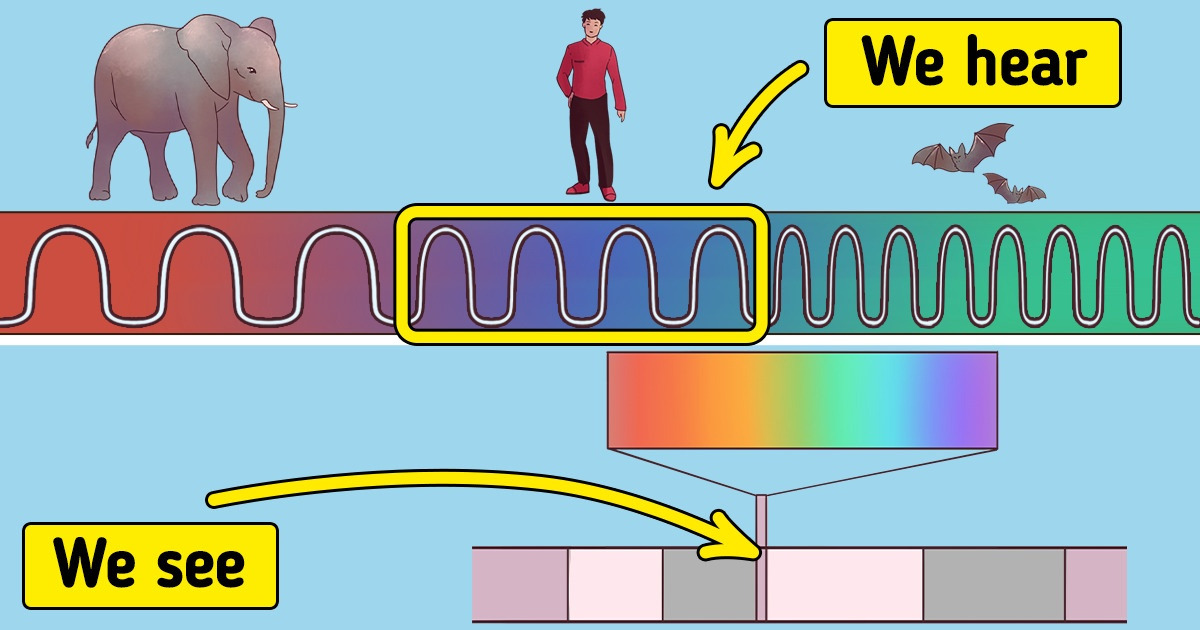
A human gets information about the world thanks to the things they see and hear — but that’s not all. Our smell, taste, reactions to cold and hot, sense of touch, and many other senses contribute inform us too. Eventually, our brain turns these signals into a single picture of the world that surrounds us.
5-Minute Crafts explains, in simple terms, how the senses work and how they can surprise us.
What senses are
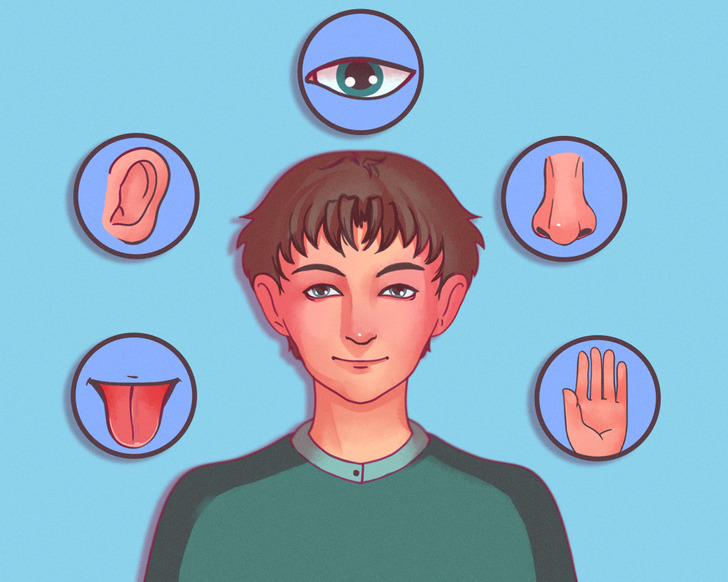
The human body receives information about the world through the work of the senses. These happen, first of all, using the eyes, ears, nose, tongue, and skin. They are connected to the human nervous system, which processes the data they receive.
How do these organs manage to collect data? For that, they rely on special cells that convert the transformation of stimuli from the external or internal environment into signals. These signals are then sent along the nerves to the brain, which recognizes them as, for example, an image, a sound, a smell, a taste, or a touch. Each organ has its own characteristics.
Eyes transform the light into an image that the brain later recognizes.
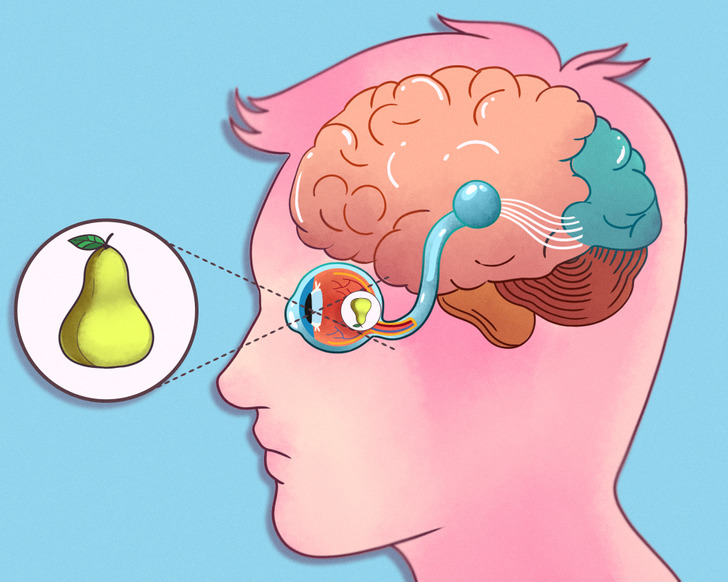
Light reflected from an object enters the eye. There, the rays of light are refracted by the cornea — the convex transparent part of the eyeball. The rays then pass through the pupil, which can contract and expand to adjust the amount of light transmitted.
Next, the light falls on the lens, which additionally refracts it in order to focus the rays on the retina. It contains light-sensitive photoreceptor cells — called rods and cones, which turn light into an electrical impulse. Through the optic nerve, this impulse travels to that part of the brain called the visual cortex. It is this part that is responsible for the transformation of the impulse into an image, which we see in the end.
By the way, the image on the retina is reflected upside-down, while the brain returns it to its original position. If you put on special glasses that flip the image, your brain will flip it again, so in a few days, you can see in the usual way. After removing the glasses, your brain will require another 24 hours to bring the image back into the initial position.
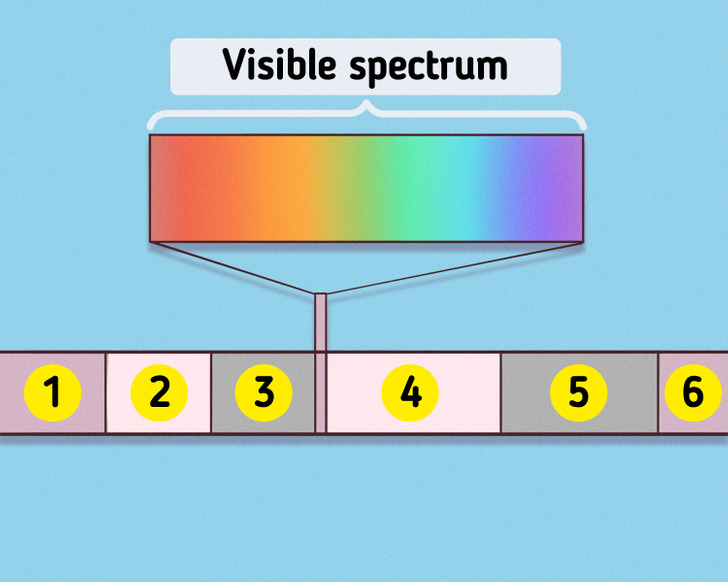
Our eyes see radiation in the range of ~400 to 750 nanometers, thanks to which we distinguish colors from purple to red. In general, we recognize millions of shades — some people more, some people less.
But we don’t see everything that surrounds us. Our eyes’ abilities are limited. If you look at the whole spectrum of electromagnetic radiation, our eyes perceive a rather narrow range. Look at the image above — it shows things that are out of our visibility zone:
- Radio waves
- Microwaves
- Infrared radiation
- Ultraviolet
- X-ray
- Gamma radiation
By the way, cats and dogs seem to be able to see things in the ultraviolet spectrum. Humans, in their turn, can feel it: our skin reacts to ultraviolet, which results in us getting a tan. We also cannot distinguish infrared radiation, but we can feel its warmth.
Sound waves turn into sound signals in our ears with the help of bones and liquid.
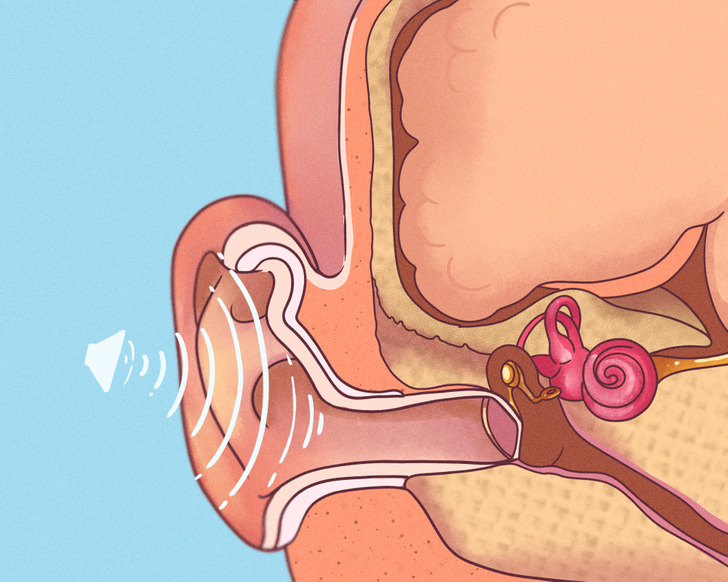
The sounds that we hear reach our ears in the form of sound waves. The auricle catches them and sends them to the ear canal to the eardrum. The sound wave hits the eardrum, creating vibrations that are transmitted to the auditory ossicles. They amplify the vibrations and direct them to the inner ear, where the bony spiral canal (cochlea) and the semicircular canals filled with fluid are located. The vibrations created by the bones are captured by special cells thanks to little hairs. After that, nerve receptors get activated, which send signals through a special nerve to the brain so that it interprets them as certain sounds.
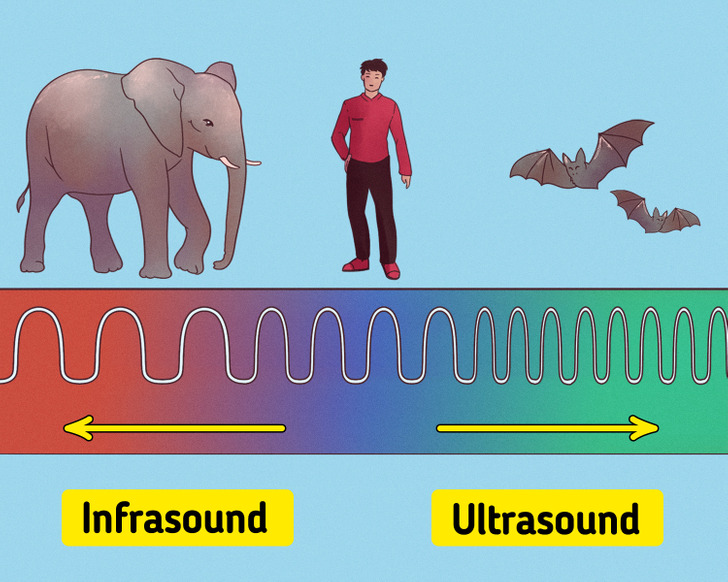
The ear of an ordinary person is able to hear sound in a limited frequency spectrum — from 20 Hz to 20 kHz.
- Any sound lower than this range is called infrasound and elephants use it for communicating with each other.
- Any sound above this range is called ultrasound. Bats are able to recognize and emit it in order to navigate in space.
We can’t hear what elephants and bats “talk” about but we can record their sounds thanks to special devices. Moreover, the sensitivity of ears in different people is different. You can check your ears’ audio spectrum by watching this video.
The map of the tongue doesn’t exist: taste buds work the same everywhere.
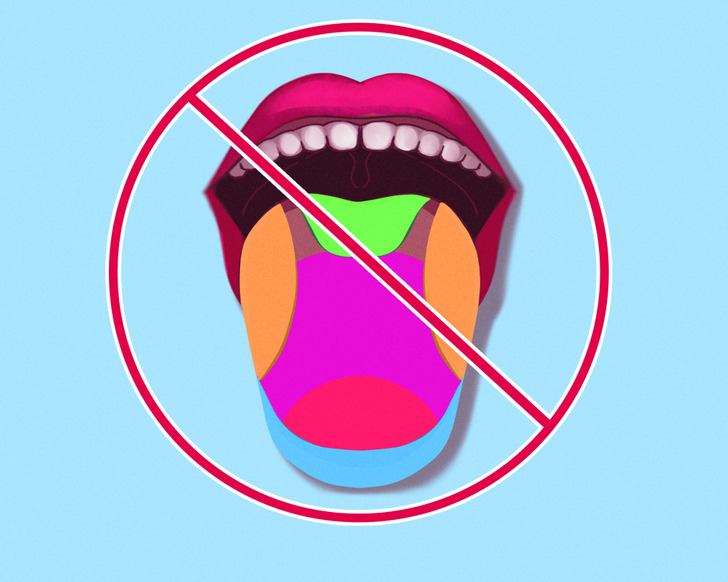
Our tongue also collects information about the world for our brain. The surface of the tongue has small bumps or papillae. When we eat or drink something, chemical substances from food and drinks get inside the papillae and reach the taste buds. The chemicals stimulate the cells inside these receptors, causing signals to travel along the nerves to the brain, which recognizes them as a particular taste.
By the way, there used to be a popular opinion that different parts of the tongue have different sensitivity to certain tastes. For example, sweet and salty tastes were felt by the tip of the tongue and bitter tastes were distinguished by the middle of the tongue. In fact, any tongue area is equally responsible for distinguishing tastes. The nose is the organ that affects the sensation of taste. Try to close your nose and the taste of any food will become less distinguishable and less intense.
Chemical substances in the air lead to the appearance of signals that our brain recognizes as smells.
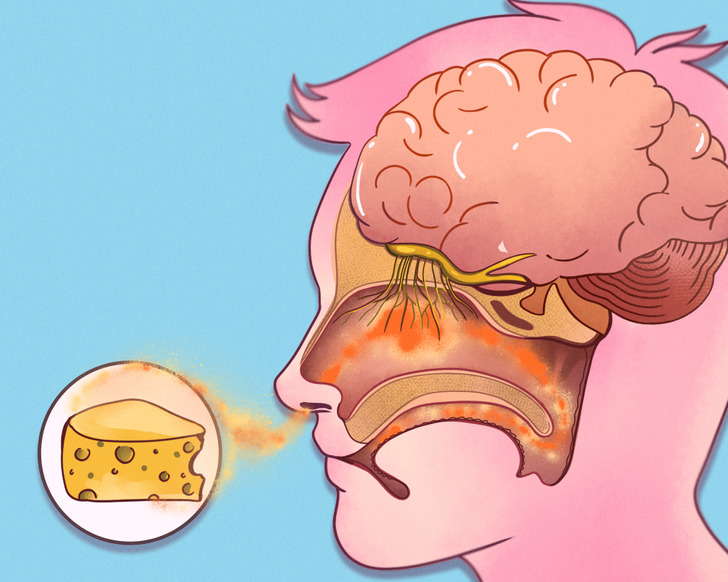
The sense of smell is called olfaction. We smell aromas thanks to special receptors located on the hair-like cilia of the epithelium in the upper part of the nasal cavity.
When we smell or inhale something, some substances located in the air get connected with those receptors. This process starts signals that go to the olfactory bulbs along the nerves. They can distinguish different smells, increase our sensitivity to the smell, or, on the contrary, decrease it to filter out background aromas. From the bulbs, signals travel along the nerves to the brain, which recognizes them as a particular smell.
By the way, while our eyes can distinguish millions of shades, our noses can distinguish 1 trillion smells.
Special receptors located in the skin recognize different sensations and broadcast them to the brain in the shape of signals.
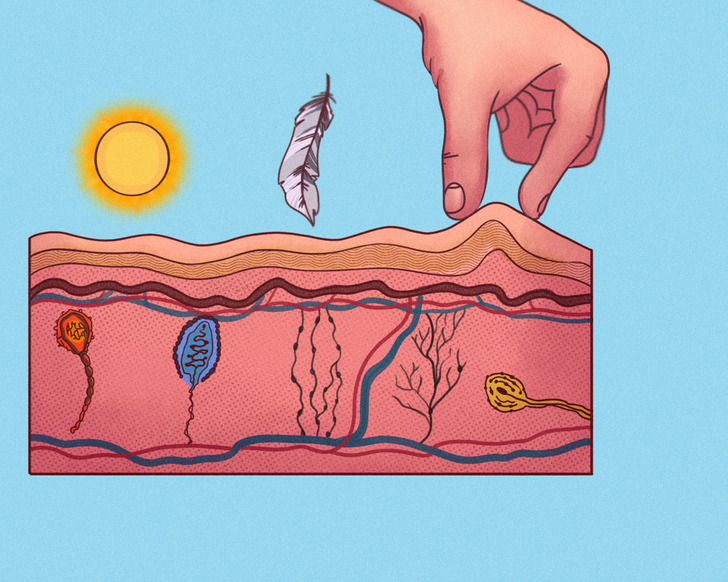
Our skin consists of 3 layers of tissue: the outer layer (or epidermis), dermis, and hypodermis. Special skin receptors located in these tissues recognize sensations and transmit signals along the nerves to the brain. Depending on the placement and presence of the type of receptor, different parts of the body have different sensitivities. Thanks to these receptors, human skin not only senses touch, but is also able to distinguish between vibration, pain, itching, and tickling.
By the way, it’s not just the skin but also the hair growing on it that acts as sensory receptors. They respond to touch thanks to the nerve fibers that are located in the hair follicle.
All of this actually means that we don’t see, don’t hear, and don’t notice many things happening around us.

If we relied only on our senses, then our perception of the world would be limited. And we wouldn’t even notice much of what was happening around us.
But the development of science and technology helps correct this unfairness. First of all, the invention of devices has allowed us to widen our opportunities to watch the world. For example, by using a microscope, you can see the smallest of objects, even those that are invisible to the naked eye. While night vision goggles give a person the ability to detect objects that emit infrared radiation, even if there is complete darkness around.